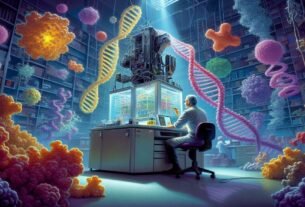Imagine… April 26, 1900, Pasadena, California. No internet yet, even putting sugar in your coffee was an adventure, and people interpreted earthquakes simply as, “Hey, the ground shook, I guess.” Right at that moment, the future earthquake hero, Charles Francis Richter, opened his eyes to the world! 👶🌎
Richter was not just a scientist; he was the legend of seismology, the master of measurement, and a brilliant mind who turned the tremors of nature into numbers. Thanks to him, the answer to “Was there an earthquake?” is now “Yes, magnitude 6.3” — precise, numerical, and scientific.
Earthquakes: Nature’s Power and Humanity’s Panic Button 🌋💥
Let’s talk a bit about earthquakes, my dear. Earthquakes are energy explosions caused by the movement of tectonic plates in the Earth’s crust. This energy accumulates, accumulates… until one day it goes “BAM!” and the ground shakes.
- Dancing rooms: Books fall off shelves, coffee spills ☕💔.
- Racing hearts: People panic, wondering, “Was that a 4, or a 7?”
- Nature takes the stage: Mountains, valleys, and rivers seem to say, “I’m here!” with every movement.
This is where Richter steps in, measuring these complex movements and giving people a clear idea of what’s happening.
The Richter Scale: Earthquake’s Mathematical Joke 📏😂
Richter’s greatest invention was the Richter Scale, which bears his name. In 1935, Charles declared, “Let’s express earthquake magnitudes with a number,” revolutionizing the world of seismology.
- Logarithmic scale: A magnitude 5 earthquake releases 10 times more energy than a magnitude 4! 😱
- Measurement devices: Seismometers recorded ground movements, which Charles analyzed to calculate numerical magnitudes.
- Life-saving: People could now anticipate the intensity and potential impact of earthquakes.
In short, the Richter Scale was like a manifesto for the scientific world: “Numbers speak to understand earthquakes.”
Other Contributions and His Love for Science 💡❤️
Richter didn’t just measure earthquakes. His lifetime contributions to science and education were remarkable:
- Systematizing seismology: Earthquake observations were no longer just “seen”; measurements, records, and comparisons became systematic.
- Passion for teaching: Richter worked for years to educate young scientists and motivate them in earthquake science.
- Scientific approach: Through experiments and observations, he showed the importance of combining mathematics and physics to understand nature.
Thanks to Richter’s work, cities became safer, engineers learned to build earthquake-resistant structures, and we could wake up in the morning without spilling our coffee ☕😅.
Charles Francis Richter’s Legacy: Why It Matters 🌟
On Richter’s birthday, it’s worth remembering that his work didn’t just change seismology; it also:
- Instilled respect and awareness of nature in people.
- Showed that science could be integrated into daily life.
- And allowed us to smile and say, “Yes, it was a magnitude 5 earthquake, but my coffee is still on the table” ☕😎.
Richter’s life is a symbol of dedication and curiosity for science. His numerical revolution is a guide for anyone seeking to understand earthquakes.
🎂 Today is Charles Francis Richter’s birthday! Simply saying “Happy Birthday” is not enough; let’s grab a coffee, try to understand earthquakes with numbers, and celebrate this revolution where science meets humor. Because science can be serious, but, my dear, it’s incomplete without fun! 😍🧪




